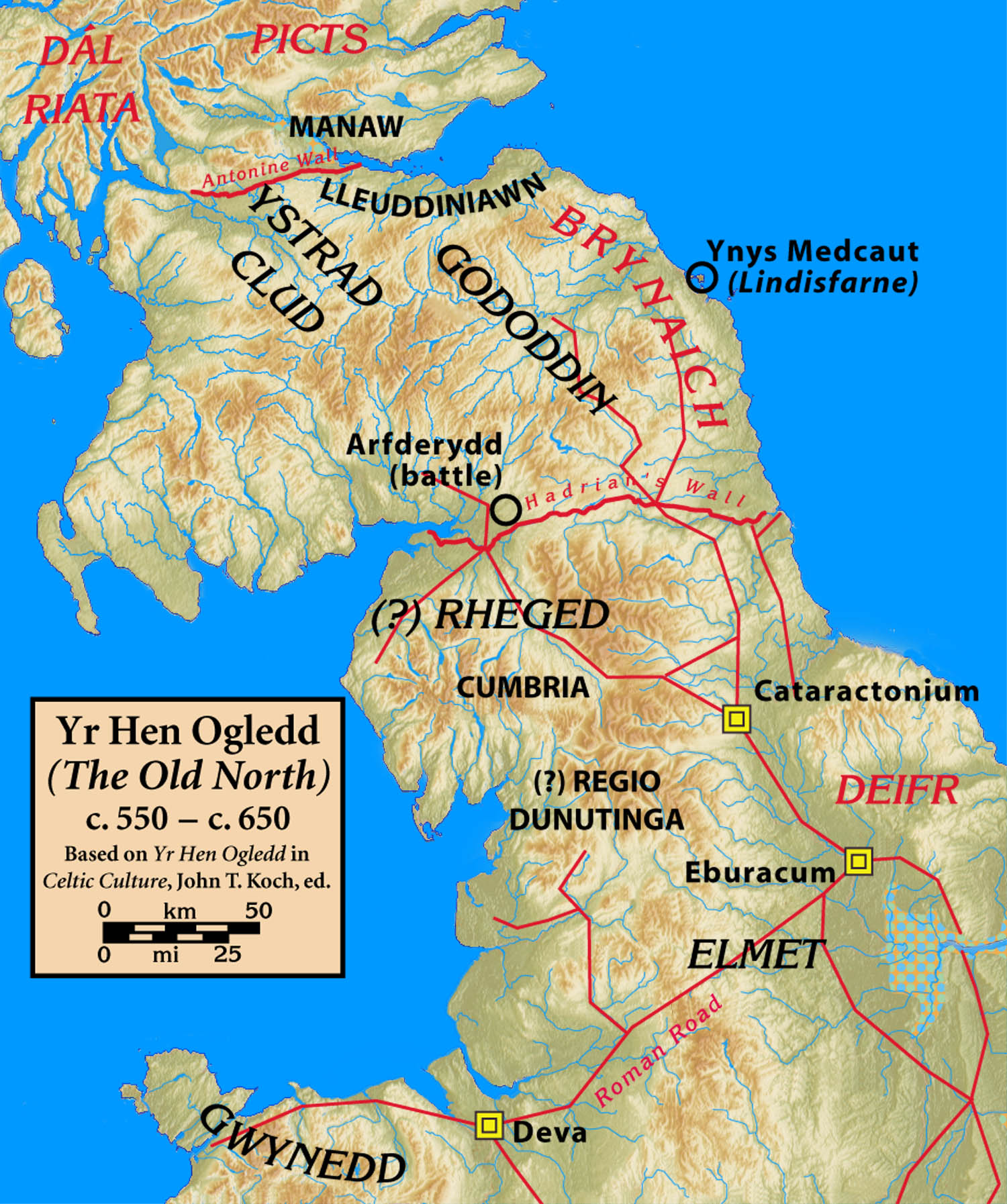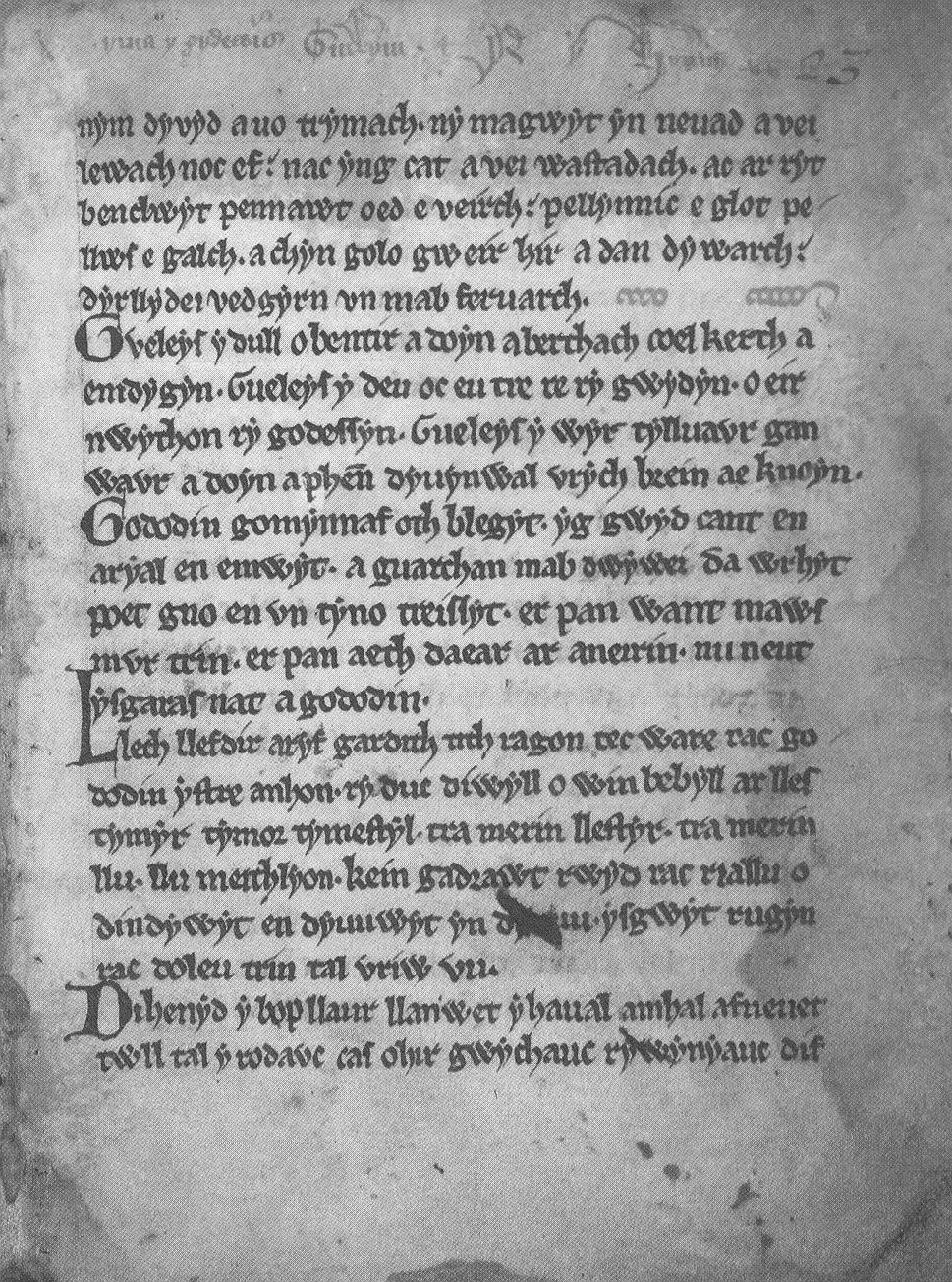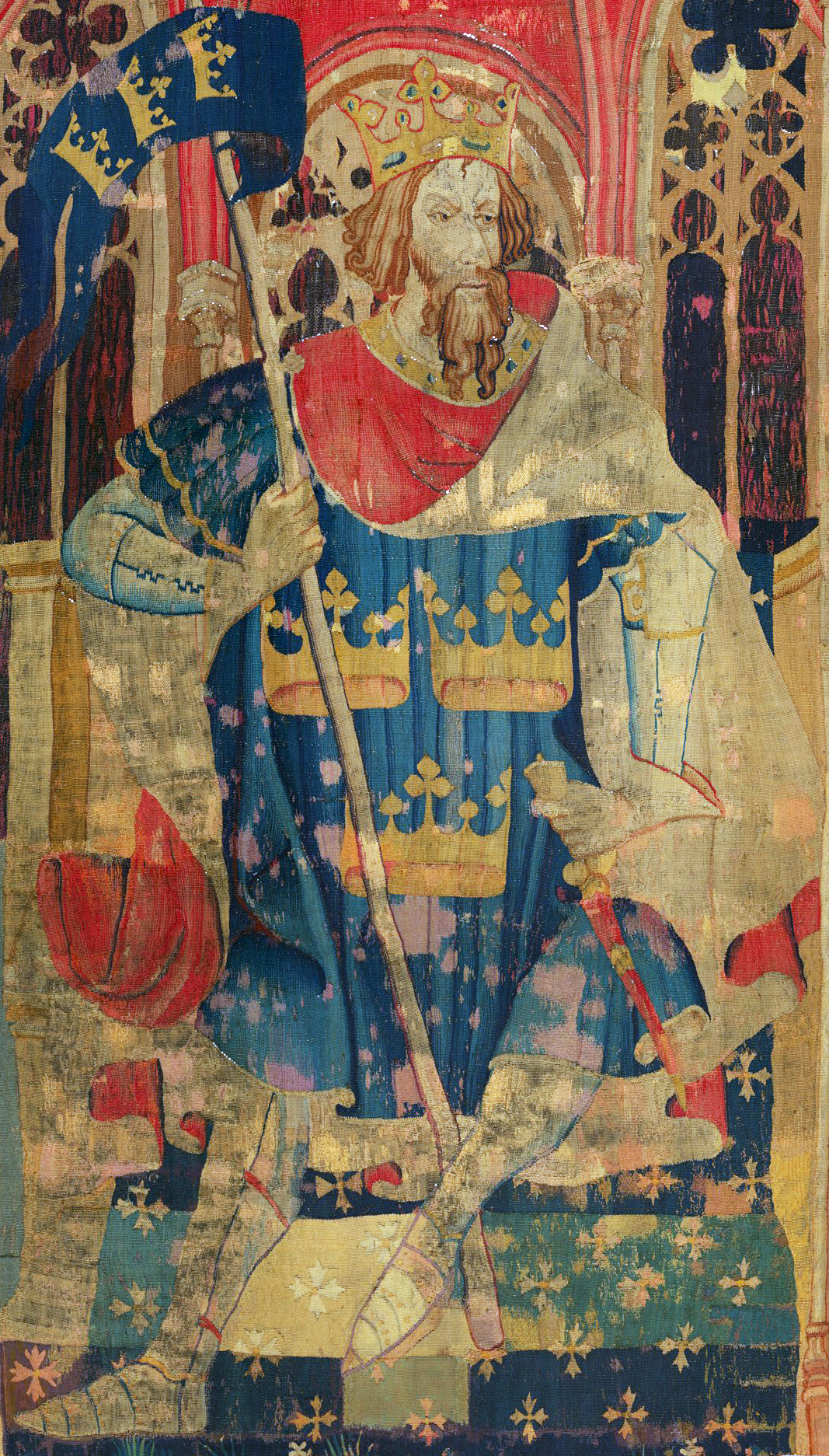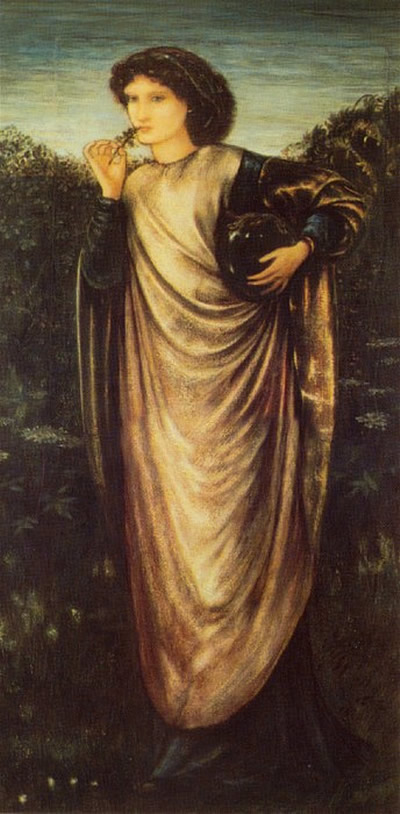|
Ywain
In Arthurian legend, Ywain , also known as Yvain and Owain among other spellings (''Ewaine'', ''Ivain'', ''Ivan'', ''Iwain'', ''Iwein'', ''Uwain'', ''Uwaine'', ''Ywan'', etc.), is a Knight of the Round Table. Tradition often portrays him as the son of King Urien of Gorre and of either the enchantress Modron or the sorceress Morgan le Fay. The historical Owain mab Urien, the basis of the literary character, ruled as the king of Rheged in Britain during the late-6th century. Yvain was one of the earliest characters associated with King Arthur. He was also one of the most popular, starring as the eponymous hero in Chrétien de Troyes' late-12th-century '' Yvain, the Knight of the Lion'' and appearing prominently in many later accounts, often accompanied by his fierce pet lion. He remains Urien's son in virtually all literature in which he appears, whereas other Arthurian-legend characters based on historical figures usually lost their original familial connections in romance ... [...More Info...] [...Related Items...] OR: [Wikipedia] [Google] [Baidu] |
Owain Mab Urien
Owain mab Urien (Middle Welsh Owein) (died c. 595) was the son of Urien, king of Rheged c. 590, and fought with his father against the Angles of Bernicia. The historical figure of Owain became incorporated into the Arthurian cycle of legends where he is also known as Ywain, Yvain, Ewain or Uwain. In his legendary guise he is the main character in Chrétien de Troyes's '' Yvain, the Knight of the Lion'' and the Welsh Romance '' Owain, or the Lady of the Fountain'', which corresponds to Chrétien's poem. Historical Owain The chief references to the historical Owain appear in the poems of Taliesin, Urien's bard. In one poem, he appears as the victor of the Battle of Alclud Ford. Another, ''Gweith Argoed Llwyfain'' ("The Battle of Argoed Llwyfain"), tells of Owain's part in a battle between the men of Rheged under Urien and the men of Bernicia under "Fflamddwyn" (Firestealer), possibly the Anglian king Theodric. When Fflamddwyn demands hostages, Owain shouts defiance and inspire ... [...More Info...] [...Related Items...] OR: [Wikipedia] [Google] [Baidu] |
Knights Of The Round Table
The Knights of the Round Table (, , ) are the legendary knights of the fellowship of King Arthur that first appeared in the Matter of Britain literature in the mid-12th century. The Knights are a chivalric order dedicated to ensuring the peace of Arthur's kingdom following an early warring period, entrusted in later years to undergo a mystical quest for the Holy Grail. The Round Table at which they meet is a symbol of the equality of its members, who range from sovereign royals to minor nobles. The various Round Table stories present an assortment of knights from all over Great Britain and abroad, some of whom are even from outside of Europe. Their ranks often include King Arthur's family, Arthur's close and distant relatives, such as Agravain, Gaheris and Yvain, as well as his reconciled former enemies, like Galehaut, Pellinore and King Lot, Lot. Several of the most notable Knights of the Round Table, among them Bedivere, Gawain and Sir Kay, Kay, are based on older characters ... [...More Info...] [...Related Items...] OR: [Wikipedia] [Google] [Baidu] |
Urien
Urien ap Cynfarch Oer () or Urien Rheged (, Old Welsh: or , ) was a powerful sixth-century Brittonic-speaking figure who was possibly the ruler of the territory or kingdom known as Rheged. He is one of the best-known and best documented of the British figures of the ' Old North'. His kingdom was most likely centred around the Solway Firth. According to the ''Historia Brittonum'' (), Urien gained the decisive advantage in a conflict against the Anglo-Saxons in northern Britain led an alliance with three other kings: Rhydderch Hen, Gwallog ap Llênog, and Morgan. The alliance led by Urien penned the Anglo-Saxons in at Lindisfarne, though this siege came to an abrupt end when Urien was murdered on the orders of his erstwhile ally Morgan. The most secure evidence for his existence comes the ''Historia Brittonum'' and eight praise-poems in Middle Welsh dedicated to him surviving in a fourteenth-century manuscript. Despite their being found in Middle Welsh orthography, t ... [...More Info...] [...Related Items...] OR: [Wikipedia] [Google] [Baidu] |
Yvain, The Knight Of The Lion
''Yvain, the Knight of the Lion'' () is an Arthurian romance by French poet Chrétien de Troyes. It was written c. 1180 simultaneously with ''Lancelot, the Knight of the Cart'', and includes several references to the narrative of that poem. It is a story of knight-errantry, in which the protagonist Yvain is first rejected by his lady for breaking a very important promise, and subsequently performs a number of heroic deeds in order to regain her favour. The poem has been adapted into several other medieval works, including '' Iwein'' and '' Owain, or the Lady of the Fountain''. Synopsis In the narrative, Yvain seeks to avenge his cousin, Calogrenant, who had been defeated by an otherworldly knight Esclados beside a magical storm-making stone in the forest of Brocéliande. Yvain defeats Esclados and falls in love with his widow Laudine. With the aid of Laudine's servant Lunete, Yvain wins his lady and marries her, but Gawain convinces him to leave Laudine behind to embark on ... [...More Info...] [...Related Items...] OR: [Wikipedia] [Google] [Baidu] |
King Urien
Urien ap Cynfarch Oer () or Urien Rheged (, Old Welsh: or , ) was a powerful sixth-century Brittonic-speaking figure who was possibly the ruler of the territory or kingdom known as Rheged. He is one of the best-known and best documented of the British figures of the ' Old North'. His kingdom was most likely centred around the Solway Firth. According to the ''Historia Brittonum'' (), Urien gained the decisive advantage in a conflict against the Anglo-Saxons in northern Britain led an alliance with three other kings: Rhydderch Hen, Gwallog ap Llênog, and Morgan. The alliance led by Urien penned the Anglo-Saxons in at Lindisfarne, though this siege came to an abrupt end when Urien was murdered on the orders of his erstwhile ally Morgan. The most secure evidence for his existence comes the ''Historia Brittonum'' and eight praise-poems in Middle Welsh dedicated to him surviving in a fourteenth-century manuscript. Despite their being found in Middle Welsh orthography, the ... [...More Info...] [...Related Items...] OR: [Wikipedia] [Google] [Baidu] |
King Arthur
According to legends, King Arthur (; ; ; ) was a king of Great Britain, Britain. He is a folk hero and a central figure in the medieval literary tradition known as the Matter of Britain. In Wales, Welsh sources, Arthur is portrayed as a leader of the Sub-Roman Britain, post-Roman Britons in battles against the Anglo-Saxons in the late-5th and early-6th centuries. He first appears in two early medieval historical sources, the ''Annales Cambriae'' and the ''Historia Brittonum'', but these date to 300 years after he is supposed to have lived, and most historians who study the period Historicity of King Arthur, do not consider him a historical figure.Tom Shippey, "So Much Smoke", ''review'' of , ''London Review of Books'', 40:24:23 (20 December 2018) His name also occurs in early Welsh-language literature, Welsh poetic sources, such as ''Y Gododdin''. The character developed through Welsh mythology, appearing either as a great warrior defending Britain from human and supernatura ... [...More Info...] [...Related Items...] OR: [Wikipedia] [Google] [Baidu] |
Morgan Le Fay
Morgan le Fay (; Welsh language, Welsh and Cornish language, Cornish: Morgen; with ''le Fay'' being garbled French language, French ''la Fée'', thus meaning 'Morgan the Fairy'), alternatively known as Morgan[n]a, Morgain[a/e], Morgant[e], Morg[a]ne, Morgayn[e], Morgein[e], and Morgue[in] among other names and spellings, is a powerful and ambiguous Magician (fantasy), enchantress from the legend of King Arthur, in which most often she and he are siblings. Early appearances of Morgan in Arthurian literature do not elaborate her character beyond her role as a goddess, a fairy , fay, a Witchcraft , witch, or a sorceress, generally benevolent and connected to Arthur as his magical saviour and protector. Her prominence increased as the legend of Arthur developed over time, as did her moral ambivalence, and in some texts there is an evolutionary transformation of her to an antagonist, particularly as portrayed in cyclical prose such as the ''Lancelot-Grail'' and the Post-Vulgate Cyc ... [...More Info...] [...Related Items...] OR: [Wikipedia] [Google] [Baidu] |
Morfydd
Morfydd ferch Urien (Middle Welsh orthographical variations include ''Morvydd verch Urien''; "Morfydd daughter of Urien") is a figure of Welsh Arthurian legend. She is the daughter of Urien Rheged by Modron, and twin sister to Owain. Morfydd appears in the Welsh Triads and is also referred to in ''Culhwch and Olwen''. The enduring love between her and Cynon son of Clydno, one of Arthur's warriors, is remarked on in several of the Triads, pointing to a now-lost popular tradition. The circumstances of her birth is related in a Welsh folktale: :In Denbighshire Denbighshire ( ; ) is a county in the north-east of Wales. It borders the Irish Sea to the north, Flintshire to the east, Wrexham to the southeast, Powys to the south, and Gwynedd and Conwy to the west. Rhyl is the largest town, and Ruthi ... there is a parish which is called Llanferes, and there is there Rhyd y Gyfarthfa (the Ford of Barking). In the old days the hounds of the countryside used to come together to t ... [...More Info...] [...Related Items...] OR: [Wikipedia] [Google] [Baidu] |
The Story Of Sir Launcelot And His Companions
''The Story of Sir Launcelot and His Companions'' is a 1907 novel by the American illustrator and writer Howard Pyle. The book consists of a large series of episodes in the legend of the chief knight of the Round Table, Sir Launcelot, and many of his friends, including the Lady Elaine, Sir Ewaine, and Sir Gareth. Plot The Chevalier of the Cart Queen Guinevere and others of the court are captured by Sir Mellegrans. Sir Lancelot, while going to save her, loses his horse due to attacking archers. His armor is too heavy to walk in, so he leaves it behind. The fastest option for Lancelot to reach Mellegrans' castle is to ride in a cart, causing much shame to him. Lancelot is successful in saving Guinevere, but continues to be ridiculed for riding in the cart. Annoyed, he leaves the court of the king for two years. The Story of Sir Gareth of Orkney Gareth is the youthful and beloved son of King Lot of Orkney and Queen Margaise. Now being of a certain age, his mother sends him ... [...More Info...] [...Related Items...] OR: [Wikipedia] [Google] [Baidu] |
Howard Pyle
Howard Pyle (March 5, 1853 – November 9, 1911) was an American illustrator, Painting, painter, and author, primarily of books for young people. He was a native of Wilmington, Delaware, Wilmington, Delaware, and he spent the last year of his life in Florence, Italy. In 1894, he began teaching illustration at the Drexel Institute of Art, Science, and Industry (now Drexel University). Among his students there were Violet Oakley, Maxfield Parrish, and Jessie Willcox Smith. After 1900, he founded his own school of art and illustration named the Howard Pyle School of Illustration Art. Scholar Henry C. Pitz later used the term Brandywine School for the illustration artists and Wyeth family artists of the Brandywine region, several of whom had studied with Pyle. He had a lasting influence on a number of artists who became notable in their own right; N. C. Wyeth, Frank Schoonover, Thornton Oakley, Allen Tupper True, Stanley Arthurs, and numerous others studied under him. His 1883 classic ... [...More Info...] [...Related Items...] OR: [Wikipedia] [Google] [Baidu] |
Historia Regum Britanniae
(''The History of the Kings of Britain''), originally called (''On the Deeds of the Britons''), is a fictitious account of British history, written around 1136 by Geoffrey of Monmouth. It chronicles the lives of the List of legendary kings of Britain, kings of the Britons over the course of two thousand years, beginning with the Troy, Trojans founding the Britons (historical), British nation and continuing until the Anglo-Saxons assumed control of much of Britain around the 7th century. It is one of the central pieces of the Matter of Britain. Although taken as historical truth until the 16th century, it is now considered to have no value as history. When events described, such as Julius Caesar's Caesar's invasions of Britain, invasions of Britain, can be corroborated from contemporary histories, Geoffrey's account can be seen to be wildly inaccurate. It remains, however, a valuable piece of medieval literature, which contains the earliest known version of the story of Leir o ... [...More Info...] [...Related Items...] OR: [Wikipedia] [Google] [Baidu] |





